In my last post, I covered the Suez Front of the Yom Kippur War. Click the link below if you missed it.
Today I will cover the Golan Heights Front of the Six-Day War, as well as the aftermath of the war.
The Golan Heights Campaign
In the background of the Yom Kippur War was the politics of the Cold War, played out by the Arabs and their Soviet allies, versus the US and Israel. The continued conflicts between Arab and Jew, bringing the two blocs to the brink of a military conflict for the first time since the 1962 Cuban Missile Crisis.
Egyptian President Anwar Sadat was well aware that his country’s weapons were dated and it lacked the ability to liberate all of Sinai in a military operation. Just four months after taking power, Sadat offered the Israelis a peace deal if they would withdraw from Sinai. Israeli Prime Minister, Golda Meir rebuffed the offer.
Left to contemplate a war he didn't want, Sadat found an ally in al-Assad, who had come to power through a coup d'état in 1970, and also had a point to prove to his people. In January of 1973 Sadat and al-Assad concluded a secret agreement to unify their armies under one command. Their objectives, however, were markedly different. Egypt was less concerned about regaining territory and more focused on a lasting peace deal with Israel. Syria, on the other hand was dead set on regaining the Golan Heights, lost to Israel in 1967. In 1967 Assad had been Defense Minister, and it was his dream, to avenge the loss and regain the Golan Heights.
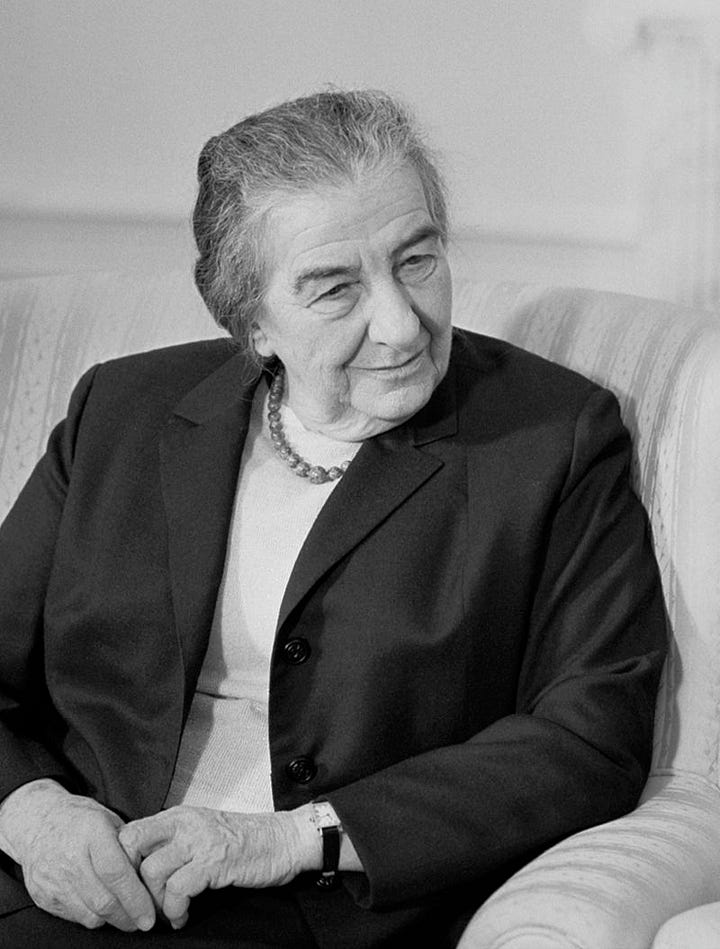

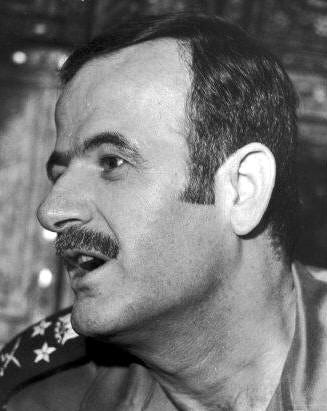

Egypt and Syria picked the holiest day on the Jewish calendar, Yom Kippur, the Day of Atonement to begin their attack. We have already seen what happened to Egypt, now we will look at how Syria fared against the Israelis.
The original Syrian offensive plan Al-Aouda (The Return), devised by Major-General Adul Habeisi, had emphasized the element of tactical surprise. It was known to the Syrians that the 188th Armored Brigade normally rotated its two tank battalions on the Purple Line, so that on any given moment only thirty-three tanks were guarding the tank ditch. The plan called for commando teams armed with Sagger missiles to quickly isolate these ten tank platoons from reinforcements, simultaneously, night time landings by helicopter-borne commando units at the Jordan bridges would isolate the Golan Heights from strategic reinforcements. Attacks by the three Syrian infantry divisions would then fragment the weakly-held forward Israeli defensive positions. To conclude the operation and deter any Israeli attempt to reconquer the Golan, the Syrian 1st and 3rd Armored Divisions would advance onto the plateau, the hope was for this operation to take 30 hours. Coordination with Egypt forced a change of plans. The Egyptians wanted hostilities to start at noon, in the end they agreed to a compromise time of 2:00 pm. The Syrian helicopter attacks were cancelled. Now uncertain of a successful outcome, the Syrians became less committed to the attack. They decided to keep one armored division as a strategic reserve, together with two presidential guard armored brigades, which fielded the most modern tanks. The revised plan would have the Syrians attack with five divisions, comprised of 28,000 troops, 960 tanks and 600 artillery pieces, against an Israeli force consisting of two armored brigades, an infantry brigade, two paratrooper battalions and eleven artillery batteries with 3,000 troops, 180 tanks and 60 artillery pieces.
After the warning by King Hussein to Golda Meir, the Israelis moved one additional armored brigade to the Golan sector. Israeli high command had, accepted a disparity in tanks of over eight to one. Chief of Staff David Elazar said: "We'll have one hundred tanks against their eight hundred. That ought to be enough.” Eventually, his deputy, Israel Tal ordered the entire 7th Armored Brigade to be brought up.
The boarder between Syria and Israel’s conquests in the Golan was called the “Purple Line”. It ran along a series of low dormant volcanic cones, called tels, in the north and deep ravines in the south. It was fronted by a continuous tank ditch, bunker complexes and dense minefields. Directly west of this line a series of earthen platforms on which a Centurion tank could position itself with only it's upper turret and gun visible, a substantial advantage when dueling the fully exposed enemy tanks.
The Syrians began their attack at 2:00 pm with an air raid by a hundred aircraft in conjunction with a fifty-minute artillery barrage. Each division had two infantry brigades and a tank battalion in the lead, as they crossed the Purple Line. The marched past the useless United Nations observation posts, as the reach the Israeli lines, they were covered by mobile anti-aircraft batteries, and equipped with bulldozers to fill-in anti-tank ditches, bridge-layer tanks to overcome obstacles and mine-clearance vehicles to deal with those obstacles. The Syrian engineer’s vehicles were priority targets for Israeli gunners and took heavy losses, but filled in the tank ditch, allowing vehicles to cross.
The 188th Armored Brigade held the defensive line with two battalions, the 74th in the north and the 53rd in the south. The northern battalion waged an exemplary defensive battle against the forward brigades of the Syrian 7th Infantry Division, destroying 59 Syrian tanks with minimal losses. The southern battalion destroyed a similar number, but they were facing four tank battalions and a dozen of its own tanks were knocked out. At a bunker complex opposite the Syrian village of Kudne, the defending company beat off several determined attacks by the Syrian 9th Infantry Division. By nightfall, the Israeli company was reduced to three tanks, with only 69 rounds for their tanks between them. If the IDF command expected any further resistance by the 53rd battalion, reinforcements were a necessity.
Operational command of the Golan front had at first been given to Colonel Yitzhak Ben Shoham, commander of the 188th Armored Brigade. He ordered Colonel Avigdor Ben-Gal and his 7th Armored Brigade to concentrate at the village of Wasset. Ben-Gal resented taking orders from an officer of equal rank and stormed off to Northern Command Headquarters at Nafah, announcing he would place his force at the Quneitra Gap, a pass south of Mount Herman and the main access to the Golan Heights from the east.
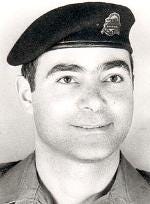
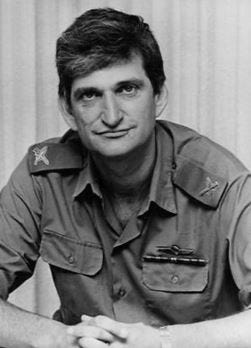
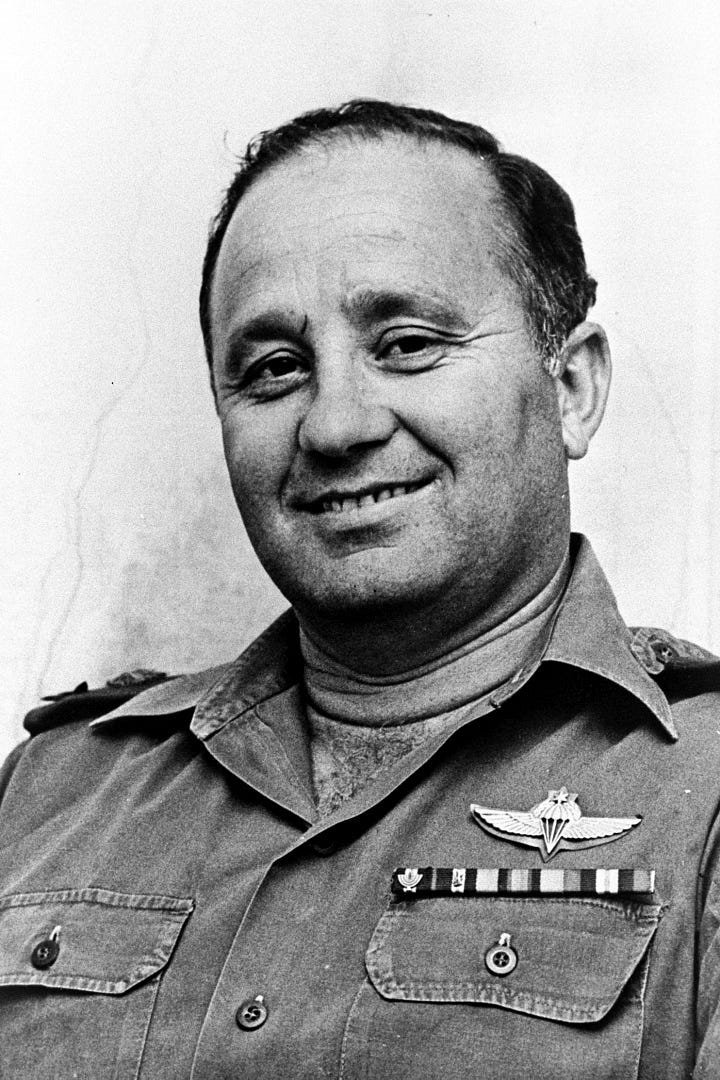
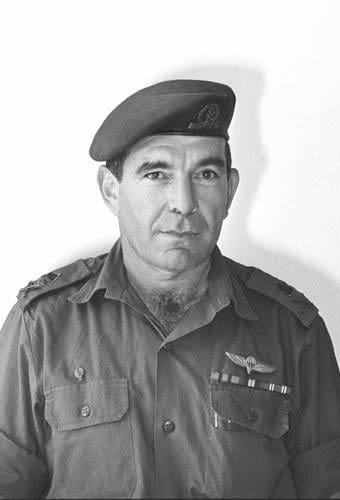
Major General Yitzhak Hofi, the Northern Command leader and his senior staff officers were absent at the moment of Ben-Gal's arrival, they did not expect the Syrian attack until 6:00 pm and they were working on moving their headquarters. Operations Officer Lieutenant Colonel Uri Simhoni was left in charge and therefore it was him who allocated the tactical reserves, thereby largely deciding the course of the battle.
The 77th Battalion of Ben-Gal's brigade was sent to the Quneitra Gap. The 82nd Tank Battalion and two companies of the 75th Mechanized Infantry Battalion were sent to the Southern Sector. Another tank company that had just arrived in the south, was ambushed by an infiltrated Syrian commando force, armed with Sagger missiles, and almost entirely wiped out.
At 4:00, General Hofi, who had finally returned to his command center, split command of the Golan front. The northern sector would be the responsibility of Colonel Ben-Gal and the 7th Armored Brigade with an additional tank battalion, the 54th attached. The southern sector would be commanded by Colonel Yitzhak Ben Shoham of the 188th Armored Brigade with the 82nd Tank Battalion attached.
The first wave of the Syrian offensive had failed to make any progress against the Israelis, but at nightfall a second, larger wave, launched their attack. The attack included five mechanized infantry brigades with forty tanks each and an additional armored brigade of about ninety tanks. Two of these brigades were to attack the northern sector, four were assigned to attack the southern sector. The 7th Armored Brigade in the north managed to hold the rocky hills defending the northern flank of their headquarters in Nafah, inflicting heavy losses on the Syrians. During the night of October 6, it beat off an attack by the 78th Armored Brigade. On October 7, the 7th Armored Brigade sent part of their reserve unit to the southern sector which was on the point of collapse. The Syrian High Command, understood that forcing the Quneitra Gap in the southern sector, would ensure a total victory on the Golan, and decided to commit its strategic armored reserves to the battle, making the Gap, the focus of the fighting in this phase of the conflict.
On the morning of October 7, Moshe Dayan called Shalhevet Freier, the Director General of the Israel Atomic Energy Commission, to a meeting with Golda Meir to discuss the possible arming aircraft with nuclear weapons, but Meir rejected this option. The Syrian mechanized brigades in this area did not continue the offensive but began to entrench themselves in strong defensive positions. They had been given strict orders by Syrian President Al-Assad not to approach the Jordan River, for fear of triggering an Israeli nuclear response. (It was not officially known if Israel possessed nuclear weapons, but they had quietly given everyone that impression. In fact they have not admitted to having the weapons to this day.)
During the night of October 7, a unit of the Syrian Presidential Guard, the 81st Armored Brigade, equipped with modern T-62s, attacked The Gap but was beaten off. After this engagement, the Israeli brigade would refer to The Gap as the "Valley of Tears” because of the number of casualties. Syrian Brigadier General Omar Abrash, commander of the 7th Infantry Division, was killed on October 8 when his command tank was hit as he was preparing an attack by the 121st Mechanized Brigade in an effort to bypass the gap by a more southern route.
Having conducted numerous exercises on the Golan Heights, Israeli gunners were well aware of the avenues of approach the Syrians would use. During night attacks, however, the Syrian tanks had the advantage of night vision equipment, which was not equipped on Israeli tanks. Instead, Israeli tanks were fitted with large xenon searchlights which were useful for blinding anti-tank teams and close in targets, but announced their positions from miles away. The 77th Tank Battalion was forced back but Lieutenant Colonel Avigdor Kahalani managed to hold a second line.
In the afternoon of October 9, Syrian command committed the Republican Guard 70th Armored Brigade, equipped with T-62's and BMP-1, Infantry Fighting Vehicles. Chief of Staff David Elazar, directed all reserves to the threatened southern sector, trusting that the northern sector was secure. The next morning with situation did not improve for the Israelis, most of the IAF was in the Sinai fighting the Egyptians, taking away a huge advantage for Israel. Plus, the better armored T-62s were hard to destroy at long range and their high-velocity 115 mm smoothbore guns were quite accurate at medium ranges.
The 77th Brigade was taking losses from Syrian tank fire as well as an intense artillery barrage, forcing the Israeli Centurions to withdrew from their tank ramps. The situation was stabilized by an ad hoc force of thirteen tanks formed by Lt. Col. Yossi Ben-Hanan from repaired vehicles and stray crews. The Israeli reinforcements stopped the Syrian attack and they soon abandoned the attempted breakthrough, having lost 260 tanks in two days in the Quneitra Gap.
Further south in the sector, the Israeli 188th Armored Brigade had much flatter terrain to defend but also faced two-thirds of the second wave, while fielding less then a third of the Syrian tanks. In addition to those drawbacks, it suffered from ineffective command. Ben-Shoham initially still had his headquarters in Nafah, far from his sector. He did not realize, this was a major offensive, not just a small raid, because of this, Ben-Shoham, tended to spread the tanks of the 53rd Battalion along the entire line. He also failed to coordinate the reinforcement of the 53rd Battalion with the newly arrived 82nd Battalion.
The commander of 53rd, Lieutenant Colonel Oded Eres, sent one company of the 82nd Tank Battalion, that had just arrived, to his right flank and another at his center. When no further reinforcement materialized, he urgently ordered the southern company to the north again. Unfortunately, it was ambushed on the way and his left flank remained unreinforced. This was the main axis of advance for the Syrian 9th Infantry Division. Its commander, General Hassan Tourkmani, ordered the remnants of an tank battalion to be sacrificed by forcing their way through a minefield, losing countless tanks in the effort, but opening the way for the rest of the division.
The Syrian 51st Armored Battalion passing through the Kudne/Rafid Gap turned northwest to move along the Petroleum Road AKA the Tapline Road, which provided a diagonal route across the heights, running straight from Hushniya to Nafah, the Israeli Golan headquarters, in the rear of the Quneitra Gap. Israeli command was initially slow to realize that a breakthrough had taken place. Their main concern was that the Syrians would occupy some forward bunker complex or settlement. The fact that the defending tank platoons were still intact was seen as proof that the line had not been broken. By 6:30 pm Ben-Shoham moved his headquarters to the south. When Ben-Shoham received reports of Syrian radio traffic at Hushniya, Israeli reserve tanks passing columns of Syrian tanks in the dark and enemy tanks moving at the rear of the observation post on Tel Saki, were dismissed as misidentifications. Only when two tanks parked near his staff vehicles in the dark were recognized as T-55s, did he did he understand that a large Syrian tank unit had infiltrated his lines.
Ben-Shoham ordered Lieutenant Zvika Greengold, a newly minted but untested armored officer, who had just arrived at Nafah, to gather some crews and follow him to the south with a few tanks to relieve the tanks at two bunker complexes, three miles south of Nafah base. Greengold was warned by a truck convoy that there were Syrian tanks ahead, these were tanks from the 452st Tank Battalion, hurrying north to surprise Nafah.
Confronted at short range with a group of three T-55's, Greengold's Centurion destroyed them in quick succession. He then moved parallel to the road to the south, hitting advancing Syrian tanks in the flank and destroying another ten while he approached Hushniya. Because of the destruction of so many of his tanks, the commander of 452st, Major Farouk Ismail, concluded that he had been ambushed by a strong Israeli tank unit. He stopped his advance and took up a defensive position at Hushniya. Greengold, who was in radio contact with Colonel Ben-Shoham, decided not to reveal how precarious he situation was, hiding the fact that his "Force Zvika" consisted of only a single tank. During the late evening of October 6, the Northern Command’s Reserve Tank Battalion advanced from Nafah towards Hushniya, to seal that breakthrough point. The attack ran into a prepared Syrian position, occupied by a superior force of T-55s, and was a dismal failure, leaving all of its officers dead or wounded. Greengold incorporated the remnants of the unit into his Force Zvika.
The 43rd Mechanized Infantry Brigade, entered the Golan at Kudne, but then sharply turned to the right advancing over the Reshet road behind the Purple Line in the direction of Quneitra. The Israeli 1st Infantry Brigade warned the 7th Armored Brigade of the danger. Ben Gal released a company of the 82nd Tank Battalion he had held back. The commander Captain Meir "Tiger" Zamir was sent to the south to cover his flank. Zamir managed to ambush the Syrian brigade. Zamir used the xenon searchlight on his tank to illuminate targets. His company destroyed a dozen vehicles. At dawn he surprised a column from the 43rd Brigade from the rear and knocked-out all of its forty tanks.
Around midnight at Safed, General Hofi, began to understand the magnitude of the Syrian breakthrough. He warned Chief of Staff Elazar that the entire Golan might be lost. Overhearing this message, an alarmed Secretary of Defense, Moshe Dayan, decided to personally visit the Northern Command headquarters. In a late night meeting, Hofi informed Dayan that an estimated three hundred Syrian tanks had entered the southern Golan and there were no reserves available to stop a Syrian incursion into Galilee. Visibly shaken by this news, Dayan ordered the bridges over the Jordan River to be wired with explosives in the event that the needed to be destroyed. Next, he contacted Benjamin Peled, Commander of the Israeli Air Force. Dayan shocked Peled by announcing that the Third Temple was about to fall, code for an attack against Israeli soil. The IAF had just launched Operation Tagar, a very complex plan to neutralize the Egyptian anti-aircraft missile belt in the Sinai. Overruling objections by Peled, Dayan ordered the IAF to immediately conduct Operation Doogman 5. The destruction of the Syrian SAM belt, that would allow to the IAF to halt the Syrian advance.
Since there was no time to obtain recent information on the location of the batteries, the attempt was a costly failure. The Israelis only destroyed one Syrian missile battery and lost six F-4 Phantom fighters. As a result, the IAF was unable to make a significant contribution to the battle.
Less pessimistic than Dayan, Elazar was not ready yet to abandon the Golan Heights. Israeli High Command's strategic reserve, was the 146th Armored Division. It was originally earmarked for the Central Command, which was tasked with controlling the border with Jordan. In the evening of October 6, Elazar had considered sending the 146th Division to the collapsing Sinai front. However, the revelation of the dire situation in the north changed the situation. The Golan became the priority because of its proximity to the Israeli population centers at Tiberias, Safed, Haifa and Netahya.
The division would take some time to deploy, but some smaller units could be quickly moved to the front, to bolster the defenses. The Syrians had expected it to take at least twenty-four hours for Israeli reserves to reach the front lines, but in fact, reserves began to join the fight only nine hours after the war began and only twelve hours after the start of the mobilization. Israeli forces in the Golan, had been at only 80% of their planned strength for a full war with Syria. Northern Command had a reserve consisting of a unnumbered rapid deployment Centurion tank battalion and the 71st Mechanized Infantry Battalion. During the night of October 6, these two battalions were brought up.
Around 1:00 am on October 7, the 36th Armored Division under the command of Brigadier General Rafael Eitan, was moved up to take direct command of the northern front. Under the original mobilization Plan Gir ("Chalk"), the 36th Division was to be reinforced by the 179th Armored Brigade. On October 6, there was a plan to send this brigade to the Sinai, but this was abandoned after the Syrian breakthrough. To speed up the relocation of 7th Brigade to the north, they left their tanks behind and when the arrived at Tasa, the main mobilization complex for the Sinai, used the pre-staged vehicles of the 179th Armored Brigade to reconstitute itself at Nafah. Two additional reserve armored divisions were called up but there was such a rush to get troops to the front that as soldiers arrived they were quickly assigned to tanks and sent to the front, without waiting for the crews they trained with to arrive, machine guns to be installed, or the tank guns to be calibrated, and these units were fed piece-meal into the battle.
The first and second waves of the Syrian offensive had lost 300 tanks by the morning of October 7, but the Israelis had lost 150 of the 250 tanks they had initially committed to battle. The 71st Brigade blocked a advance by the westernmost elements of the Syrian 9th Infantry Division towards the Bnot Yaacov Bridge, the crucial connection between Galilee and Nafah. All attempts to patch the breach in the main defensive line of the southern sector became futile, when the center and right flank of the 188th Armored Brigade started to collapse. During the night, it had largely managed to hold its ground against continuous attacks, while hoping to buy time for reserve forces to reach the front lines. Some tank crews fought on in hopeless situations rather than voluntarily give ground.
Dawn revealed that under the cover of darkness, the Syrian 5th Infantry Division had bridged the tank ditch at numerous points and cleared corridors through the minefield belt. The 188th’s situation was made even more hazardous by the presence of the Syrian 9th Infantry Division in their rear areas. The decision was made to abandon the southern Golan. During the night, many units had already withdrawn, some slipping through the lines of 9th Division, other units were discovered and destroyed. Jewish civilian settlements were evacuated and before long, most fortification, except bunker complex 116, were also evacuated.
The remnants of the 188th Armored Brigade managed to reach the northern sector via a western route. The 82nd Tank Battalion company, commanded by Eli Geva, which had reinforced the center of the 188th Brigade's position, had destroyed thirty Syrian tanks, the day before, now they successfully crossed the axis of 9th Infantry Division and moved to the north. Only twelve of the originally thirty-six tanks of 53rd Tank Battalion remained, and their commander hid them in the crater of a dormant volcano at Tel Faris, also the location of a surveillance base. During the evening of October 7, he would successfully break out to the west.
When the Syrian 5th Infantry Division occupied the plateau of the southern Golan. Colonel Ben-Shoham tried to maintain a foothold on the access roads by placing small groups of troops from the 50th Paratroop Battalion with APCs on the roads, but these were easily brushed aside. The Syrian 47th Armored Brigade advanced along the escarpment to the north, in the direction of the Bnot Yaacov Bridge. The 132nd Mechanized Infantry Brigade positioned itself east of El Al, on the road along the Jordan border, running to the south of the Sea of Galilee. Israeli General Dan Lener and the 210th Division took control over the sector between the lake and the Bnot Yaacov Bridge but he had no regular units to hold this line. For the moment, he could do little more than personally halt retreating troops and vehicles on the more southern Arik Bridge and send them back over the River Jordan. Israeli command feared that the Syrians would quickly exploit this situation by advancing into Galilee.
The tide in the Golan began to turn as arriving Israeli reserve forces were able to contain the Syrian advance. Beginning on October 8, the Israelis began pushing the Syrians back towards the pre-war ceasefire lines, inflicting heavy tank losses. The Israelis, who had suffered heavy casualties during the first three days of fighting, also began relying more heavily on artillery to dislodge the Syrians at long-range.
On October 9, the Syrians launched a counterattack north of Quneitra. As part of the operation, they attempted to land heliborne troops in the vicinity of El Rom. The counterattack was repulsed, and four Syrian helicopters were shot down.
The Syrians also fired several FROG-7 surface to surface missiles, one striking the Israeli Air Force base of Ramat David, killing a pilot and injuring several soldiers, with other missiles striking several civilian settlements. In retaliation, seven Israeli F-4 Phantoms bombed the General Staff Headquarters and several other buildings in downtown Damascus, including the Soviet Cultural Center. 56 people were killed including several diplomats in the Cultural Center. Two days later, when the Soviet merchant ship Ilya Mechnikov was sunk by the Israeli Navy, the Soviets condemned Israeli actions, and there were calls within the government for military retaliation. The strike prompted the Syrians to transfer air defense units from the Golan Heights to the home front, allowing the IAF greater freedom of action.
By October 10, the last Syrian unit in the central sector was pushed back across the Purple Line. After four days of intense and incessant combat, the Israelis had succeeded in ejecting the Syrians from the entire Golan.
A decision now had to be made, whether to stop at the post-1967 border or to continue advancing into Syrian territory. The Israeli High Command debated well into the night of October 10. Some favored disengagement, which would allow soldiers to be redeployed to the Sinai (Shmuel Gonen's defeat at Hizayon in the Sinai had taken place two days earlier). Others favored continuing the attack into Syria, towards Damascus, which would knock Syria out of the war, restore Israel's image as the supreme military power in the Middle East and would give Israel a valuable bargaining chip once the war ended.
Others countered that Syria had strong defenses, antitank ditches, minefields and strong points, and that it would be better to fight from their defensive positions in the Golan Heights (rather than the flat terrain deeper in Syria) in the event of another war with Syria. However, Prime Minister Golda Meir realized the most crucial point of the whole debate:
It would take four days to shift a division to the Sinai. If the war ended during this period, the war would end with a territorial loss for Israel in the Sinai and no gain in the north—an unmitigated defeat.
This was a political matter and her decision was to cross the Purple Line. The attack would be launched the next day, Thursday, October 10. Israeli forces pushed into Syria and advanced towards Damascus along the Quneitra-Damascus road encountering stiff resistance by Syrian reservists in prepared defenses. The three Israeli divisions broke the first and second defensive lines near Sasa, and drove into the Basham Salient and eventually to within 20 miles of Damascus.
I’m right around 22 minutes reading time here, and there is a lot of ground still to cover, so I think I’ll call it good on this one and finish up in a Yom Kippur War Part III post next week. As always I hope everyone is enjoying these posts and looking forward to the next one. Until next week, Thanks for your support!
Best Wishes,
Chris

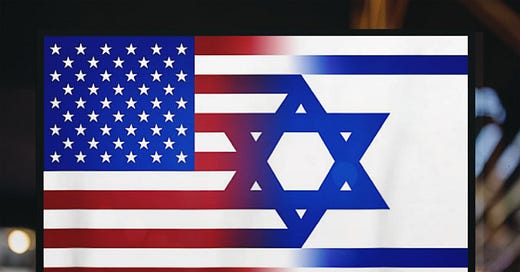




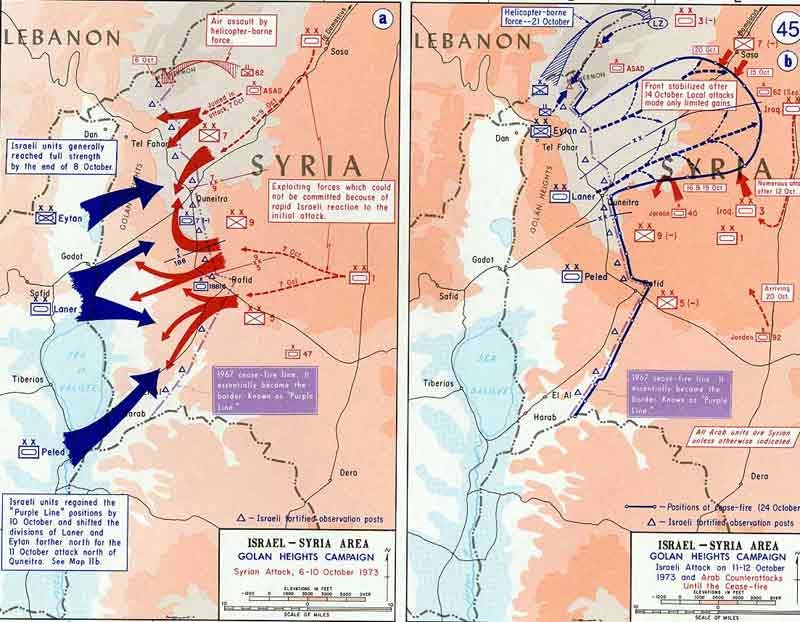
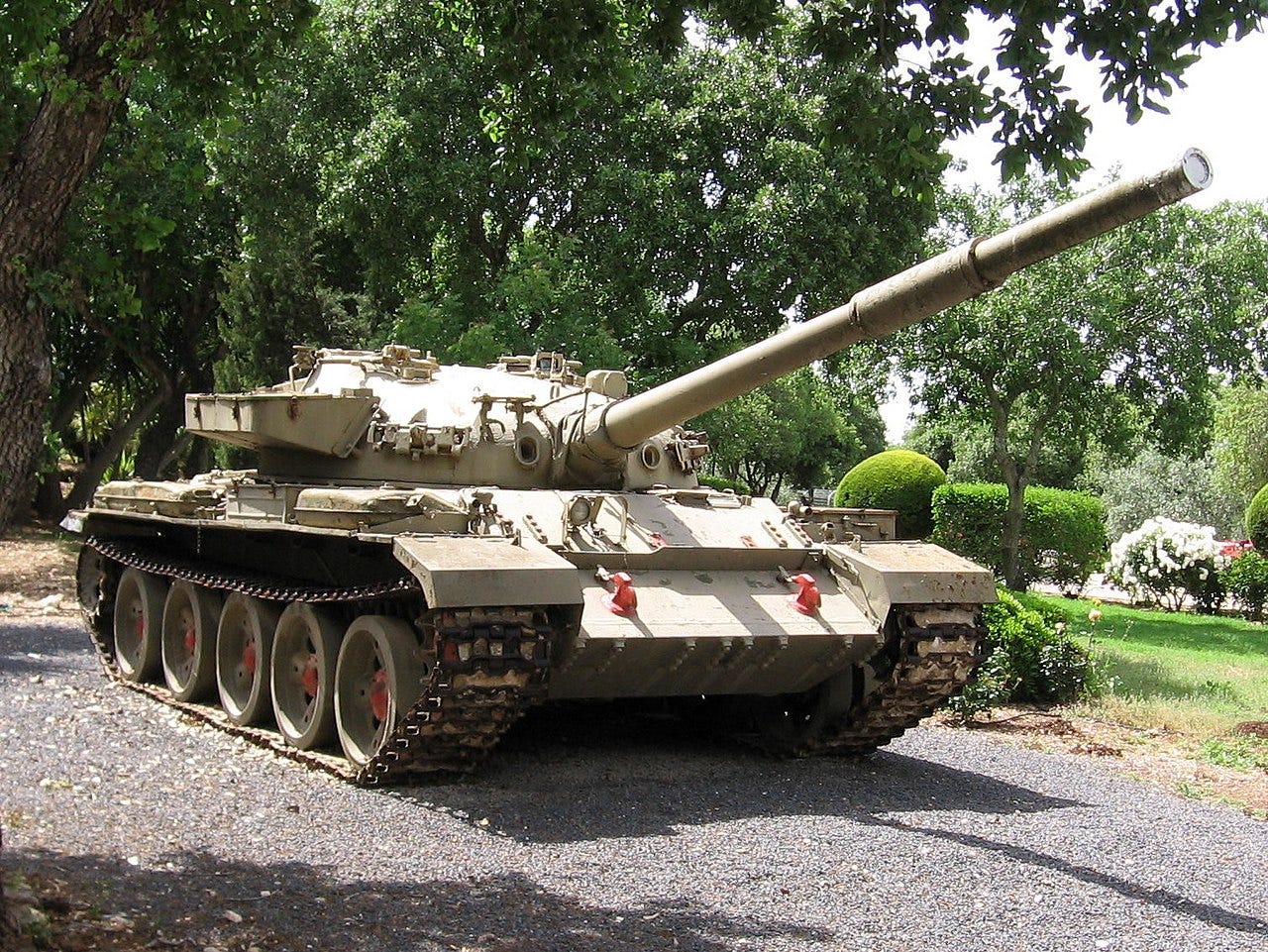
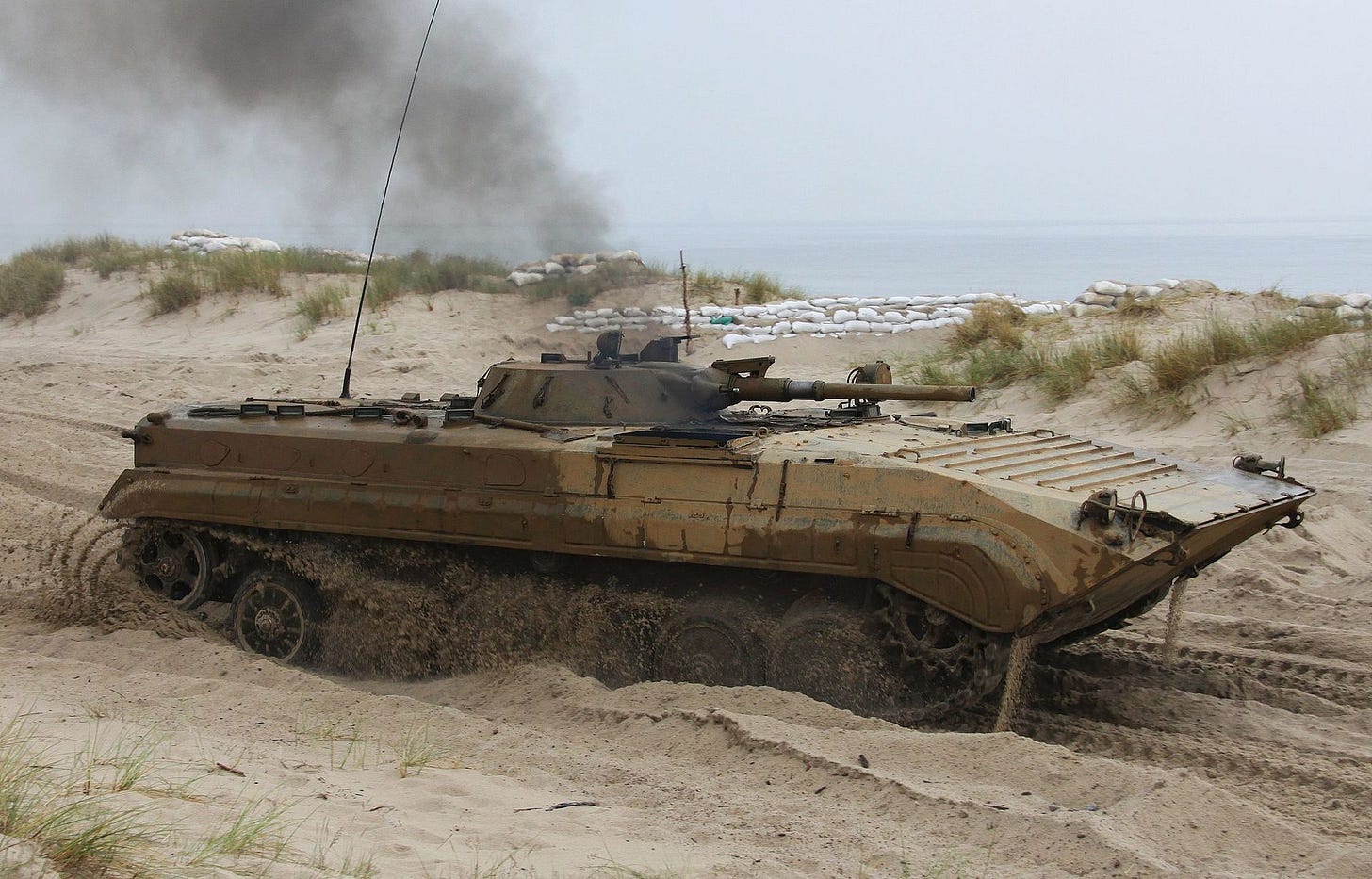

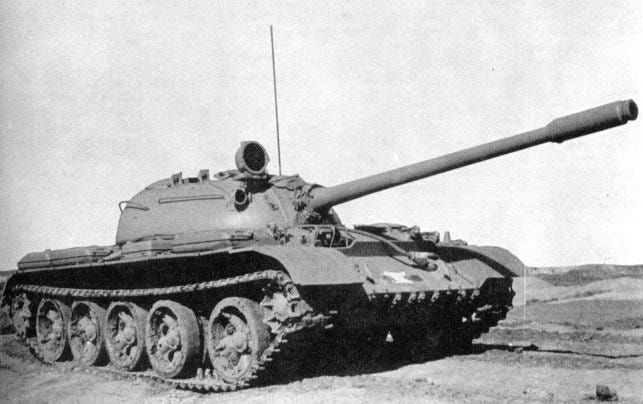
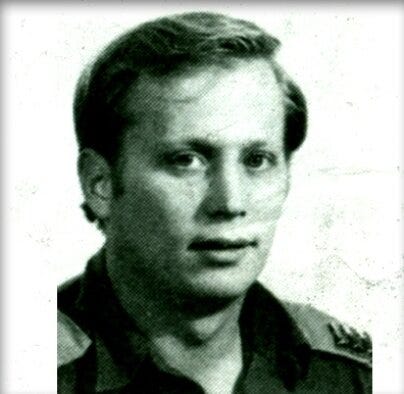
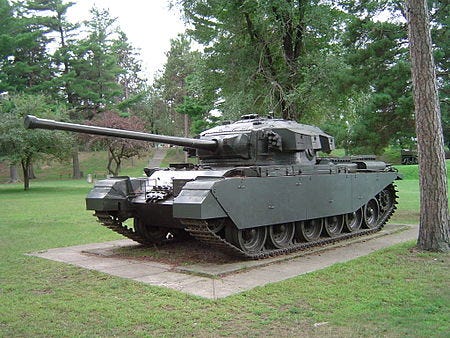
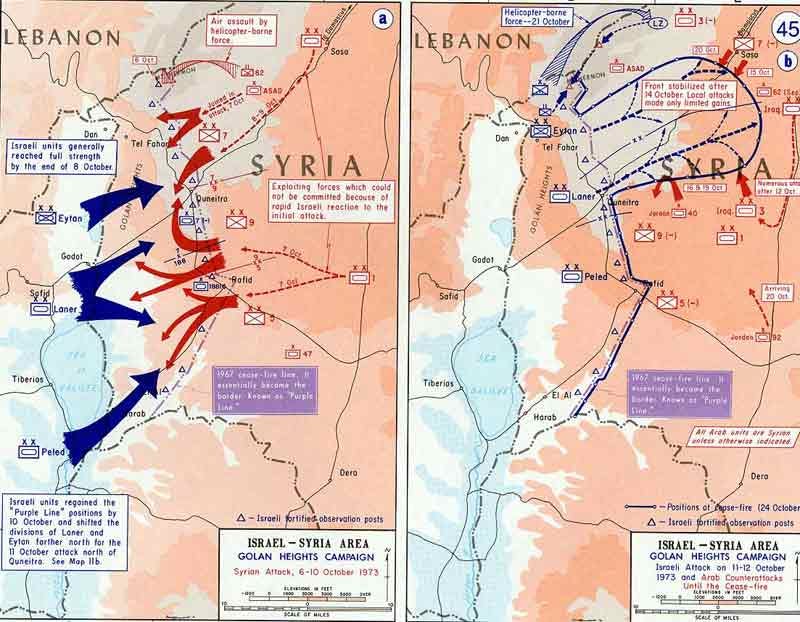

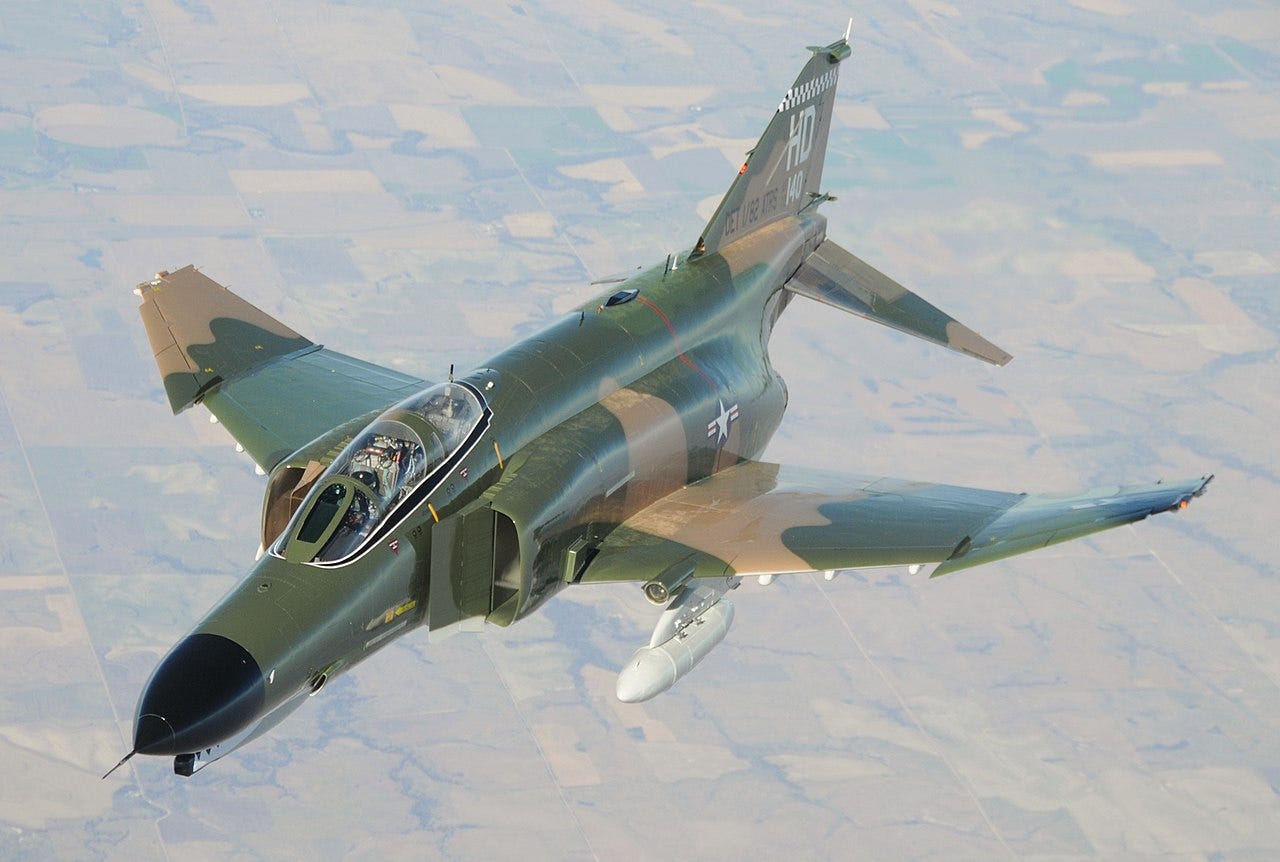
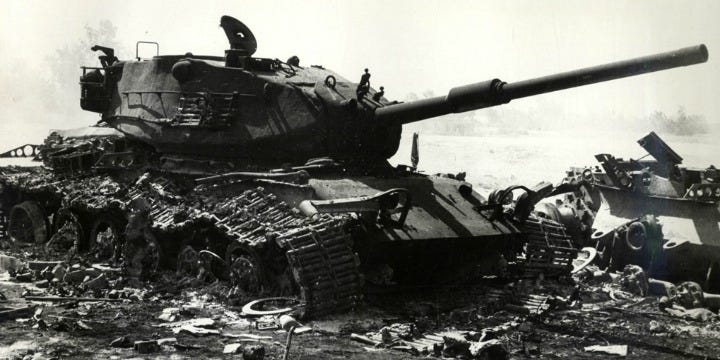
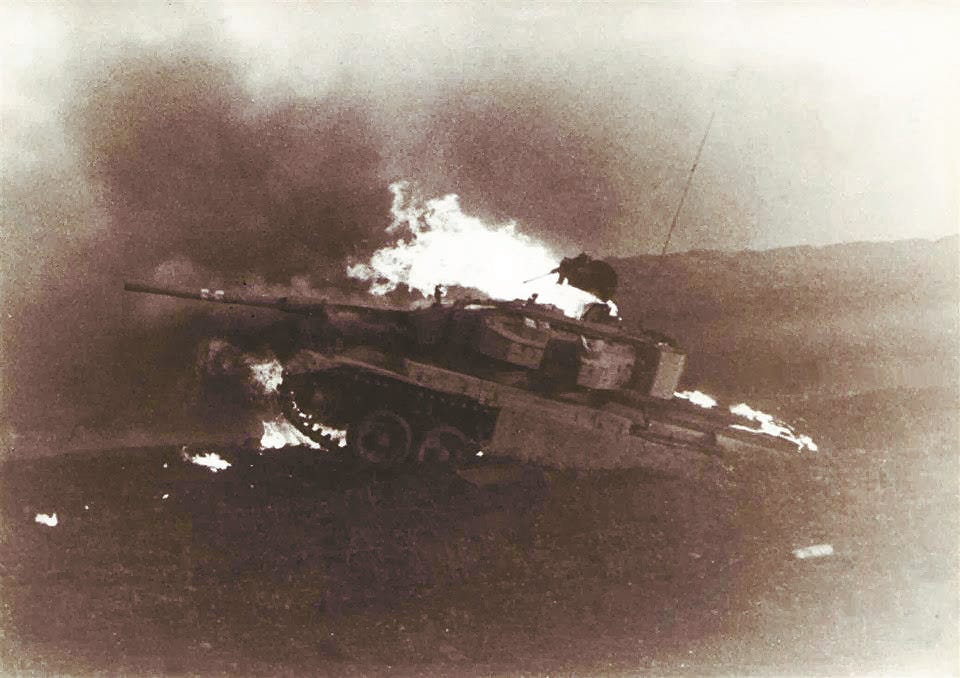
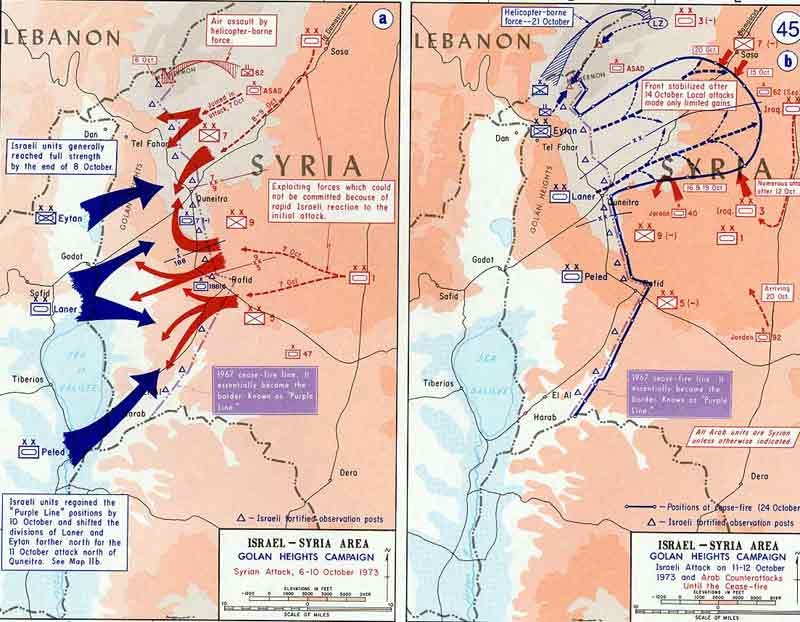
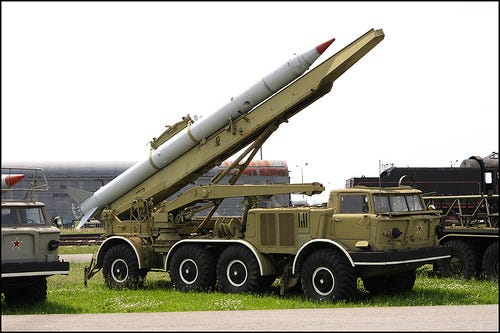
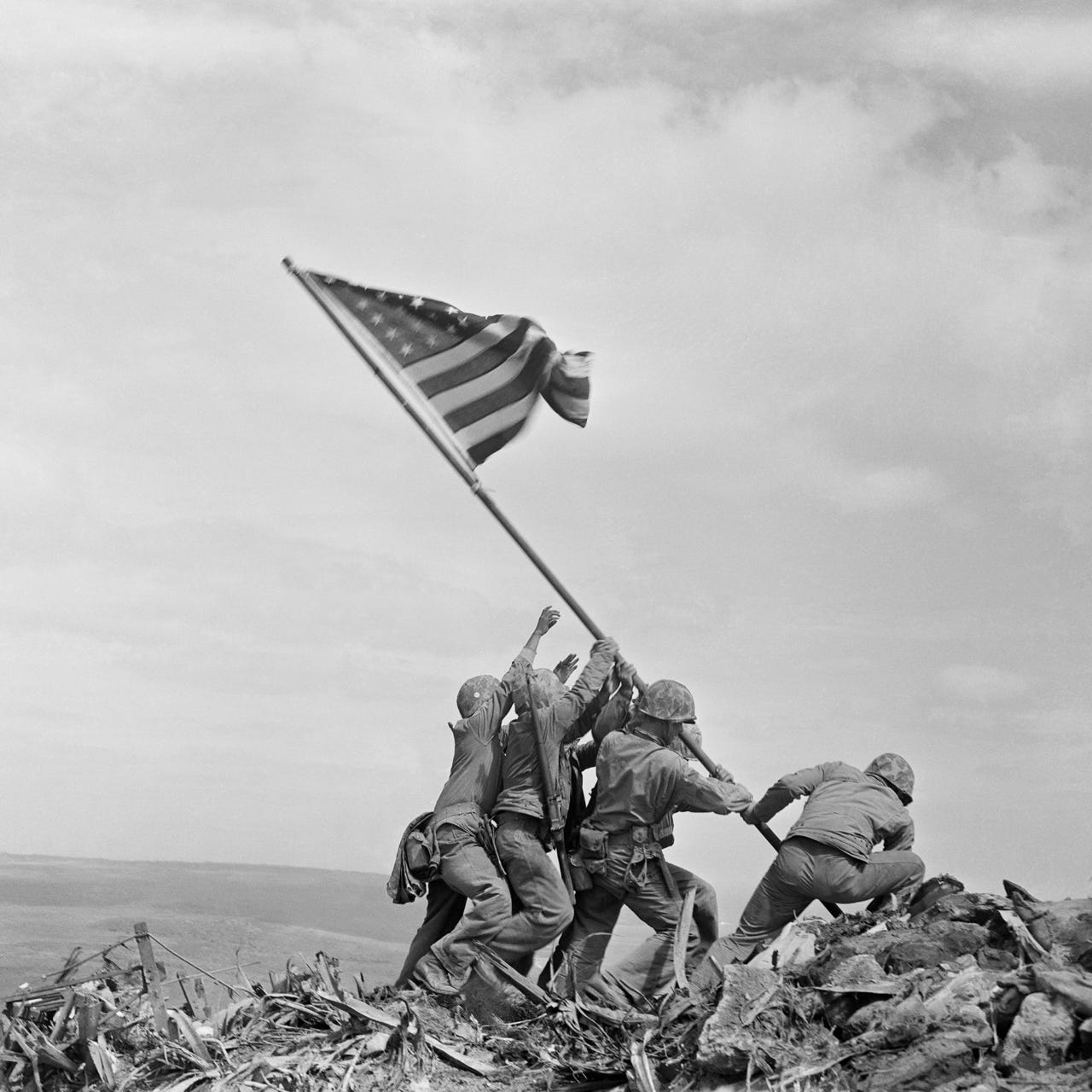
Definitely enjoying - as always!!